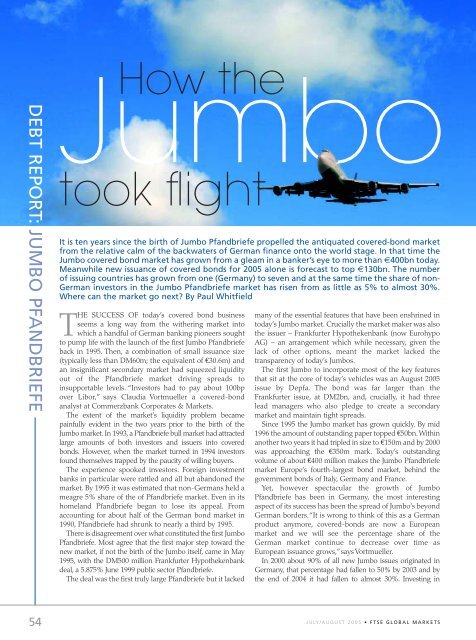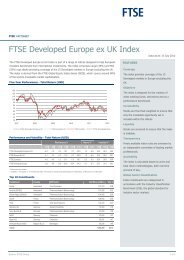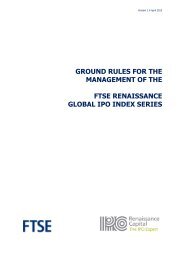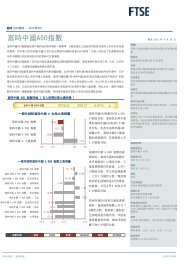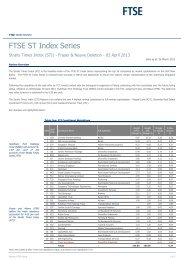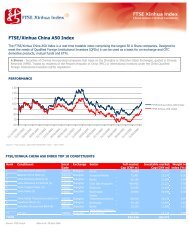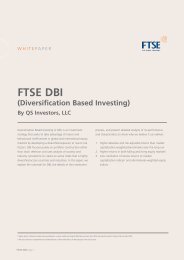Create successful ePaper yourself
Turn your PDF publications into a flip-book with our unique Google optimized e-Paper software.
DEBT REPORT: JUMBO PFANDBRIEFE<br />
54<br />
Jumbo<br />
How the<br />
took flight<br />
It is ten years since the birth of Jumbo Pfandbriefe propelled the antiquated covered-bond market<br />
from the relative calm of the backwaters of German finance onto the world stage. In that time the<br />
Jumbo covered bond market has grown from a gleam in a banker’s eye to more than €400bn today.<br />
Meanwhile new issuance of covered bonds for 2005 alone is forecast to top €130bn. The number<br />
of issuing countries has grown from one (Germany) to seven and at the same time the share of non-<br />
German investors in the Jumbo Pfandbriefe market has risen from as little as 5% to almost 30%.<br />
Where can the market go next? By Paul Whitfield<br />
THE SUCCESS OF today’s covered bond business<br />
seems a long way from the withering market into<br />
which a handful of German banking pioneers sought<br />
to pump life with the launch of the first Jumbo Pfandbriefe<br />
back in 1995. Then, a combination of small issuance size<br />
(typically less than DM60m; the equivalent of €30.6m) and<br />
an insignificant secondary market had squeezed liquidity<br />
out of the Pfandbriefe market driving spreads to<br />
insupportable levels. “Investors had to pay about 100bp<br />
over Libor,” says Claudia Vortmueller a covered-bond<br />
analyst at Commerzbank Corporates & Markets.<br />
The extent of the market’s liquidity problem became<br />
painfully evident in the two years prior to the birth of the<br />
Jumbo market. In 1993, a Pfandbriefe bull market had attracted<br />
large amounts of both investors and issuers into covered<br />
bonds. However, when the market turned in 1994 investors<br />
found themselves trapped by the paucity of willing buyers.<br />
The experience spooked investors. Foreign investment<br />
banks in particular were rattled and all but abandoned the<br />
market. By 1995 it was estimated that non-Germans held a<br />
meagre 5% share of the of Pfandbriefe market. Even in its<br />
homeland Pfandbriefe began to lose its appeal. From<br />
accounting for about half of the German bond market in<br />
1990, Pfandbriefe had shrunk to nearly a third by 1995.<br />
There is disagreement over what constituted the first Jumbo<br />
Pfandbriefe. Most agree that the first major step toward the<br />
new market, if not the birth of the Jumbo itself, came in May<br />
1995, with the DM500 million Frankfurter Hypothekenbank<br />
deal, a 5.875% June 1999 public sector Pfandbriefe.<br />
The deal was the first truly large Pfandbriefe but it lacked<br />
many of the essential features that have been enshrined in<br />
today’s Jumbo market. Crucially the market maker was also<br />
the issuer – Frankfurter Hypothekenbank (now Eurohypo<br />
AG) – an arrangement which while necessary, given the<br />
lack of other options, meant the market lacked the<br />
transparency of today’s Jumbos.<br />
The first Jumbo to incorporate most of the key features<br />
that sit at the core of today’s vehicles was an August 2005<br />
issue by Depfa. The bond was far larger than the<br />
Frankfurter issue, at DM2bn, and, crucially, it had three<br />
lead managers who also pledge to create a secondary<br />
market and maintain tight spreads.<br />
Since 1995 the Jumbo market has grown quickly. By mid<br />
1996 the amount of outstanding paper topped €50bn. Within<br />
another two years it had tripled in size to €150m and by 2000<br />
was approaching the €350m mark. Today’s outstanding<br />
volume of about €400 million makes the Jumbo Pfandbriefe<br />
market Europe’s fourth-largest bond market, behind the<br />
government bonds of Italy, Germany and France.<br />
Yet, however spectacular the growth of Jumbo<br />
Pfandbriefe has been in Germany, the most interesting<br />
aspect of its success has been the spread of Jumbo’s beyond<br />
German borders.“It is wrong to think of this as a German<br />
product anymore, covered-bonds are now a European<br />
market and we will see the percentage share of the<br />
German market continue to decrease over time as<br />
European issuance grows,”says Vortmueller.<br />
In 2000 about 90% of all new Jumbo issues originated in<br />
Germany, that percentage had fallen to 50% by 2003 and by<br />
the end of 2004 it had fallen to almost 30%. Investing in<br />
JULY/AUGUST 2005 • <strong>FTSE</strong> GLOBAL MARKETS


